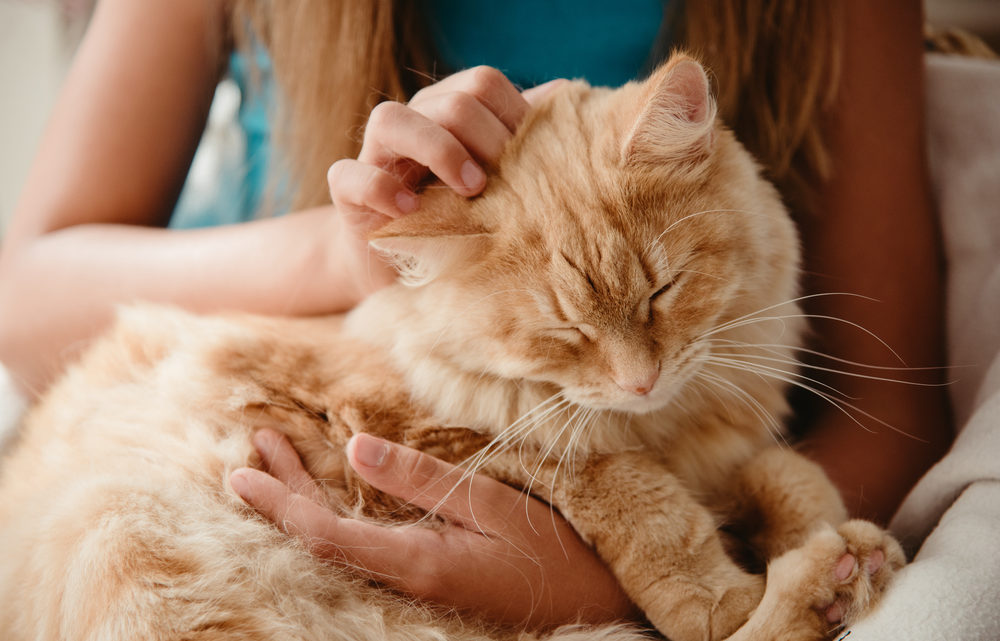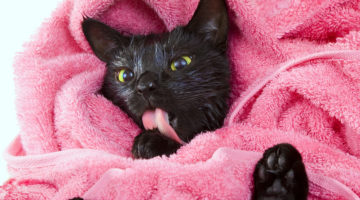Osteoarthritis is more common in older cats than we used to think, but because the signs are subtle, it often goes undiagnosed.
Does your cat have trouble jumping up on his favorite windowsill? Is he not grooming himself as well as he used to? He could have osteoarthritis. While chronic inflammatory conditions such as osteoarthritis are well documented in dogs, they have been historically under-diagnosed in cats. In fact, the incidence of osteoarthritis in cats is much higher than previously thought, and can be a significant cause of pain in adult and geriatric felines. This article will cover the causes and symptoms of feline osteoarthritis, along with advice on managing and treating the condition to keep your cat as comfortable as possible.
Causes and clinical signs of osteoarthritis in cats
Osteoarthritis involves damage and loss of the cartilage that helps protect joints, thereby causing bone-on-bone contact. This contact causes chronic inflammation, bone remodeling and pain.
The causes of osteoarthritis in cats are not as well understood as they are in dogs. In dogs, osteoarthritis is usually caused by an underlying condition (hip dysplasia, elbow dysplasia, cruciate disease, etc.). In cats, the definitive cause is usually not identified but can also be due to an underlying condition such as joint dysplasia, previous trauma, etc.
Signs of osteoarthritis in cats can be non-specific. A reluctance to jump, decreased grooming, a change in attitude, and/or loss of appetite have been documented in those affected.
Many cat owners will notice these changes at home, but because they are not the classical signs associated with joint pain (i.e. lameness, exercise intolerance and pain), they may go unassessed, undiagnosed and untreated. Methods to assess pain in cats, both subjectively and objectively, are being developed to help improve the rate of diagnosis of this common condition.
Because of their small size, limberness and agility, cats can often tolerate a remarkable amount of orthopedic pain. Orthopedic exams usually involve observing mobility and palpating (physically manipulating) the joints to feel for swelling, thickening or decreased range of motion. However, the stress of vet visits, along with the feline ability to hide discomfort, make orthopedic exams difficult for even the most experienced clinician.
Joint damage is most easily visualized and diagnosed by x-ray. More sophisticated imaging may become routine in geriatric cat examinations, but is currently mostly used only when clinically warranted.
Managing and treating feline osteoarthritis
A well-rounded integrative or holistic therapy plan that has been individually formulated for the affected cat should provide the best relief and help prevent additional joint damage.
Treatment mainly revolves around lifestyle changes. The correlation between excess weight and osteoarthritis is well documented in dogs, and common sense would suggest that a parallel situation applies to cats. Thus, it can be assumed that a healthy weight and body condition score promotes overall health and should be a main goal of therapy in any chronic condition affecting cats, including osteoarthritis. Safe exercise (with owner participation and supervision) should also be considered. Providing soft bedding, locating food and water bowls in easy-to-access areas, and implementing ramps or stairs can help prevent additional joint damage.
A variety of supplements and herbs can help with feline osteoarthritis, but be sure to work with a holistic or integrative veterinarian before starting your cat on anything new.
Cold therapeutic laser therapy, acupuncture and physical therapy have all proven beneficial in treating chronic inflammation in humans and animals, and should be considered in a therapy plan for cats affected by osteoarthritis. However, it’s important to consider temperament prior to pursuing such treatments, since stress during or from these procedures could adversely affect geriatric cats.
Conventional pharmacological intervention can involve anti-inflammatory medication and/or pain medication. Because cats affected by osteoarthritis are usually older and may be dealing with additional underlying conditions, caution should be used, and a veterinarian should always be consulted prior to administering any medication.
Advances in veterinary diagnostics, along with astute cat owners, are shedding light on the true prevalence of osteoarthritis in cats, but the condition still remains under-diagnosed. If your cat is getting older, be on the lookout for mild behavior changes that could indicate discomfort, and include routine veterinary evaluation as part of his care. Early detection and a well-rounded therapy plan can alleviate difficult-to-diagnose osteoarthritis pain, help prevent the problem from worsening, and provide quality of life for your senior kitty.
Arthritis is prevalent in older cats
A recent study reviewed x-rays taken of cats over the age of 12. The x-rays had been taken for issues not associated with osteoarthritis or joint pain. Yet evidence of arthritic changes was noted in over 90% of these cats, even though only a very low percentage were diagnosed or being treated for the condition.
These findings indicate that older cats should be monitored and thoroughly evaluated by a veterinarian for any subtle signs of osteoarthritis, because early intervention can prevent additional joint damage and pain. Osteoarthritis is a progressive disease, but pain and subsequent joint damage can be managed and treated with lifestyle changes and supportive care.







No Comment